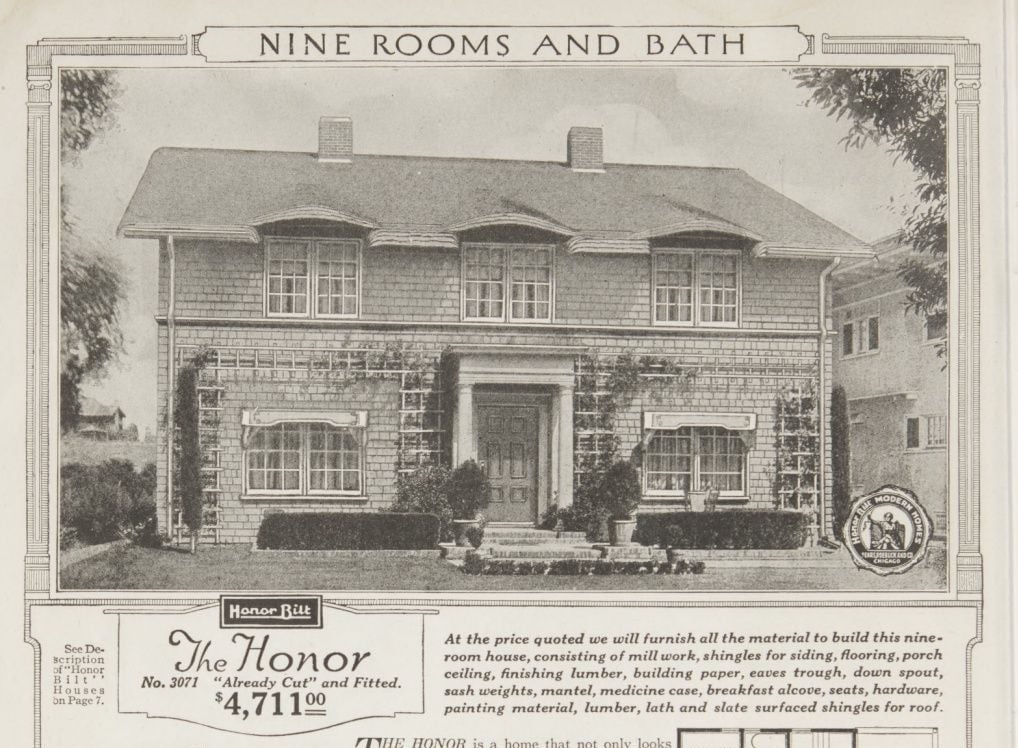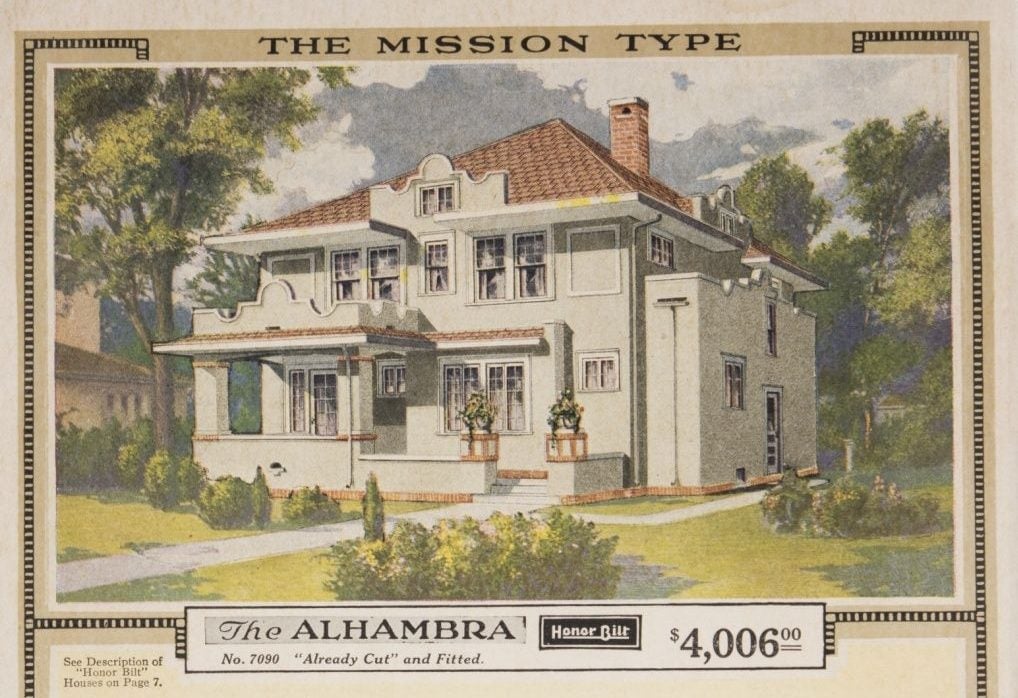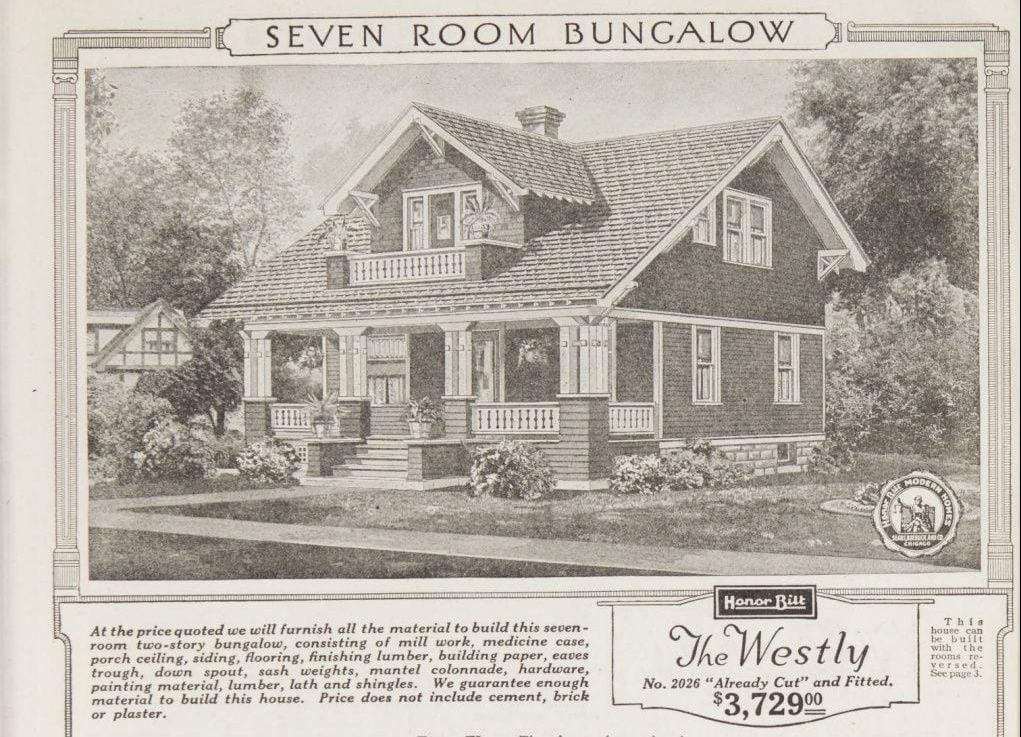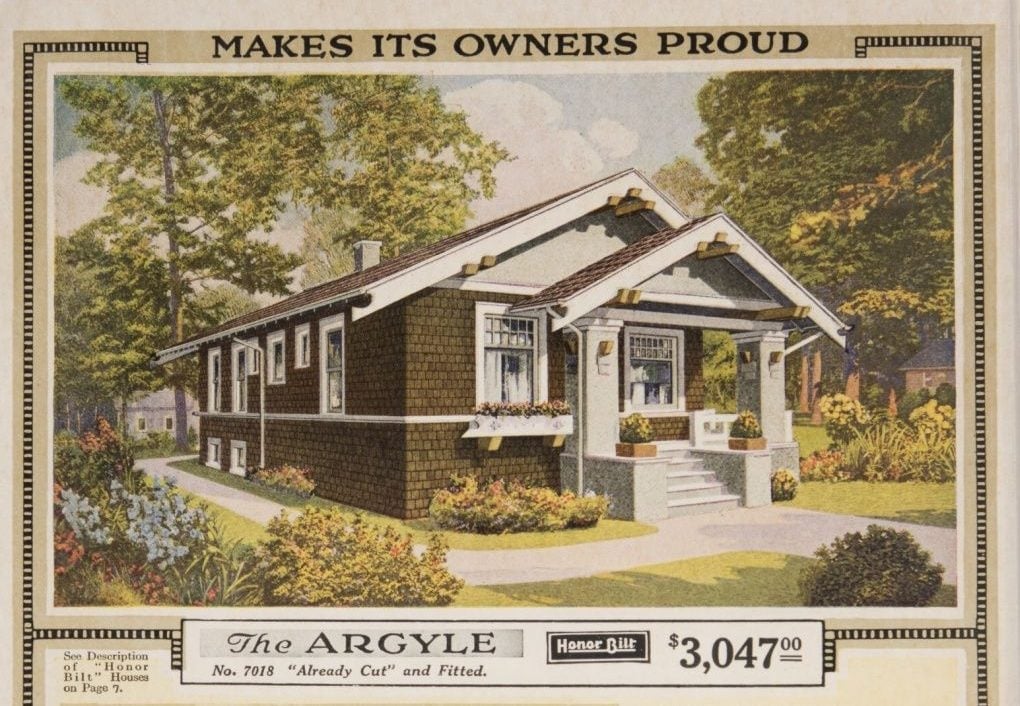You could buy anything from the Sears catalog—even a house
In 1908, Sears added a new item to its expansive catalog. Customers who turned to page 596 of catalog no. 177 were greeted by a drawing of a house.


In 1908, Sears added a new item to its expansive catalog. Customers who turned to page 596 of catalog no. 177 were greeted by a drawing of a house.
The house had two stories, nine rooms, and gabled roofs. The price was $1,700, or about $47,000 in 2018 dollars.
From 1908 to 1940, the Sears, Roebuck and Co. catalog sold mail-order houses through its Sears Modern Home Program, design podcast 99 Percent Invisible reported in September. Sears offered a separate catalog to peruse these “kit homes,” which it said could be assembled by the buyer in less than 90 days. Ordering one was as simple as filling out a form, mailing a check, and waiting for your building materials to arrive a few weeks later.
“Lumber and mill work that go into these buildings are cut to fit by improved machinery—making perfectly true cuts and miters, far better than could be done by hand labor,” a page in the 1918 catalog advised. “YOU HAVE NO MITERING, NO MEASURING TO DO—YOU SIMPLY NAIL THEM TOGETHER.”
Over 30-odd years, Sears sold as many as 75,000 of these mail-order houses in 447 different styles, transforming home ownership into an achievable American ideal. The program gained popularity after World War I, as veterans returned to the states and demand for housing rose.
Sears filed for bankruptcy on Oct. 15, 2018, and said it would close nearly 200 stores.
The Sears “Honor Bilt” homes, its highest quality kit homes, came with aspirational names like “Americus,” “Beaumont,” “Honor,” and “Starlight.” Sears encouraged customers to think of all the things they could buy to fill their new home—clothes and musical instruments and books—all from the Sears catalog, of course.
The Honor ($4,711)

The Alhambra ($4,006)

The Westly ($3,729)

The Argyle ($3,047)

The company also offered an “easy payment plan” with monthly or semiannual payments. A typical Sears loan lasted five years and charged 6% interest, but could be extended up to 15 years. The mortgage application was just half a page long.
The low prices and accessibility of Sears’ offerings let people who never expected to buy a house—immigrants, single women, and minorities—become homeowners in America. Sears also helped popularize modern conveniences like central heating, electricity, and indoor plumbing. In 1923, Sears expanded into ready-made farm buildings and barns.
Then the Great Depression hit and the mail-order home bubble burst, forcing Sears to foreclose on tens of thousands of homes it had sold to customers. In 1934 alone, the company liquidated $11 million worth of mortgages. In 1940, Sears shuttered its Modern Homes unit. Many of the remaining homes were renovated beyond recognition, torn down, or abandoned.
The Sears catalog homes that remain today are an object of fascination for collectors and kit-house hunters, who canvas the US looking for mail-order homes sold by Sears and a handful of other companies. In 2016, a “Martha Washington” Colonial-style home in Chevy Chase, Maryland, from a 1920s-era Sears catalog sold for more than $1 million (paywall). Its original price? $3,727.